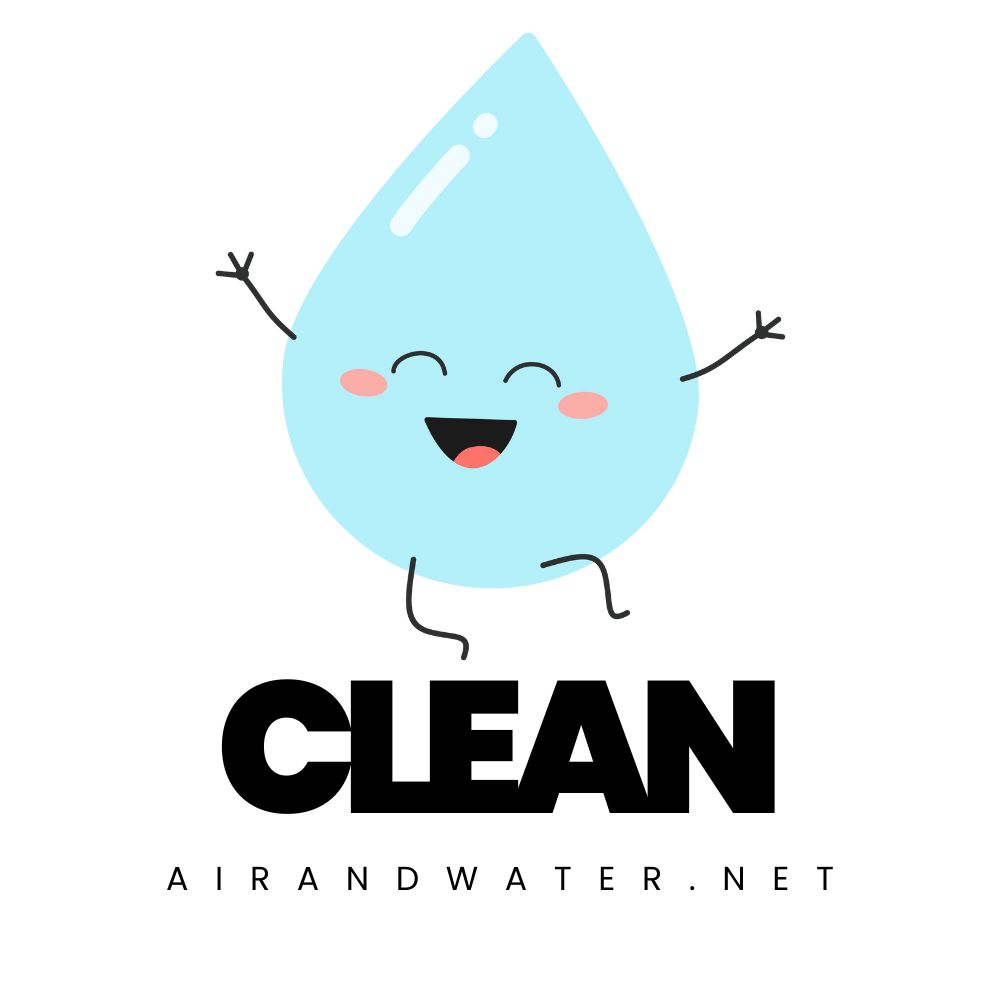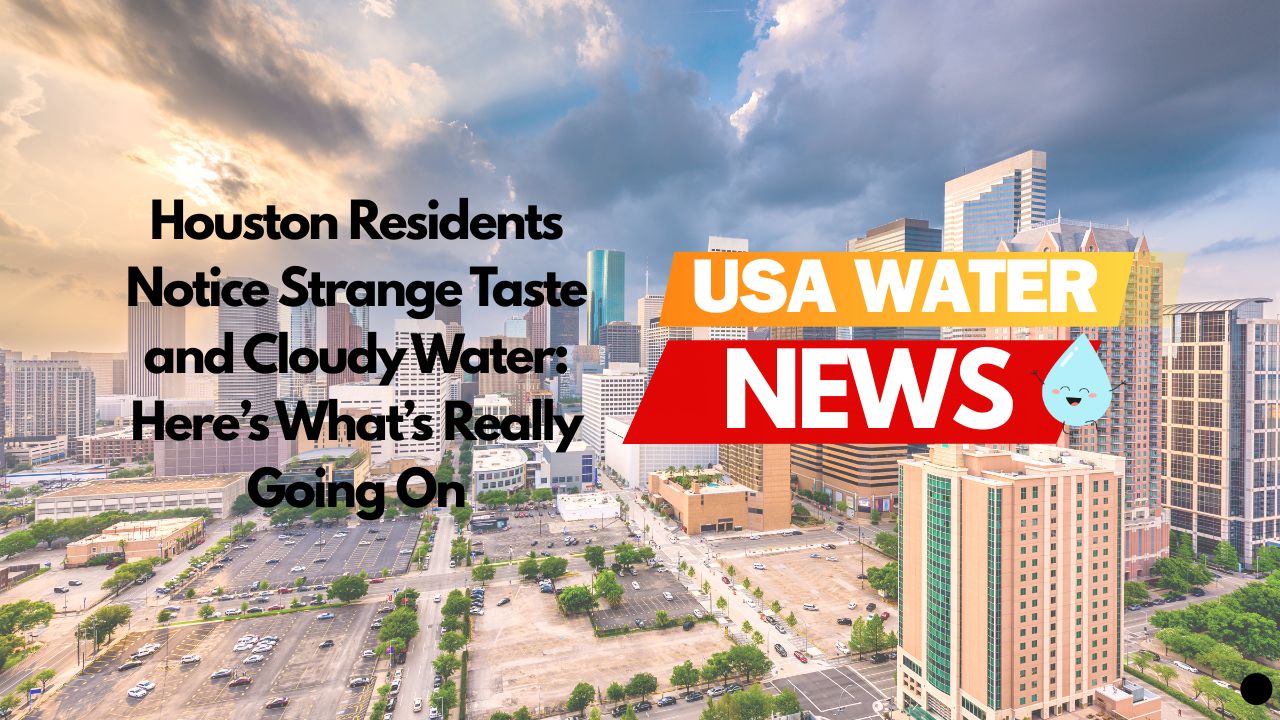If your tap water in Houston has tasted a little off recently — maybe earthy, musty, or just unusual — you’re not the only one. Over the past couple of weeks, more residents across the city have been calling Houston Public Works to ask why their water tastes different or looks slightly cloudy when it first comes out of the tap.
The city says the water is still safe to drink and continues to meet all state and federal standards. But the reasons behind the taste and clarity changes are more complex than they seem — and largely linked to Houston’s size, its seasonal weather patterns, and what’s happening inside the reservoirs that supply the city.
Let’s break this down in a clear, simple way.
A Warmer Winter + Heavy Rain = Taste Changes at the Tap
Houston relies heavily on large surface-water reservoirs — including Lake Houston, Lake Conroe, and Lake Livingston, fed by the San Jacinto and Trinity Rivers. When the seasons shift, those lakes shift too.
This year, two things happened at the same time:
- Winter was warmer than usual
- January and February saw heavy rainfall
Warm water encourages algal activity, especially certain harmless algae that release natural compounds like geosmin and 2-MIB. These aren’t dangerous, but they do smell and taste earthy even at extremely tiny concentrations.
At the same time, rainfall washed more organic material into the reservoirs, giving treatment plants more to filter and react with.
All of this means your water may taste a little different right now — even though it’s passing every safety test.
Why the Chlorine Smell Might Seem Stronger
Many residents say they’re noticing a stronger chlorine-like smell. That doesn’t mean the city is “adding more chemicals” or doing anything unusual — it’s simply making routine treatment adjustments.
Houston uses both chlorine and chloramine, depending on the plant and season. When organic matter in the lakes increases (which happens after storms), the disinfectant has to work harder. To stay within strict federal rules for disinfection byproducts (like THMs and HAA5), treatment processes shift slightly.
You might smell it more during these periods, but it doesn’t mean the water is unsafe.
Why Cloudy or Milky Water Appears — And Why It Clears
Cloudy or milky water can look alarming, but in most cases it’s caused by air, not contamination.
Houston’s system is huge, and parts of it are currently undergoing pipe flushing and maintenance. When pressure changes inside large pipes, tiny air bubbles can get into the water. When you pour it out, they make it look cloudy for a moment.
Here’s the simple test:
- If the cloudiness clears from the bottom up within a minute or two → it’s just air.
- If it stays cloudy → Houston Public Works wants you to call so they can check your area.
Houston’s Size Makes Small Changes More Noticeable
Houston’s water system is enormous — more than 600 square miles of pipes, pumps, tanks, and neighborhoods stretching across the entire metro area.
Because the city is so large:
- Water can travel long distances from treatment plants to homes
- Temperature can change inside the pipes
- Disinfectant levels can drop in certain areas
- Some neighborhoods notice changes earlier than others
This is why one district may report taste changes while another doesn’t notice anything at all.
What Residents Can Do at Home
If your water tastes or smells different, here are a few simple steps:
- Let the water run for 30–60 seconds after long periods of no use
- Refrigerate a jug of tap water overnight (this reduces noticeable tastes)
- Clean faucet aerators, which can trap sediment
- Call Houston Public Works if cloudiness doesn’t clear quickly
If you want extra consistency or control over taste, many families choose to use NSF-certified home filters — especially those certified under:
- NSF-42 (chlorine taste/odour)
- NSF-53 (lead & metals)
- NSF-401 (emerging contaminants like PFAS)
- NSF-58 (reverse osmosis systems)
These are optional, not required, but they can help keep your water tasting the same year-round.
No Safety Alerts Issued — Just Seasonal Shifts
As of now, Houston has no boil notices or safety advisories. Testing shows the city is complying with:
- EPA Maximum Contaminant Levels (MCLs)
- Lead and Copper Rule sampling
- PFAS monitoring requirements
- Disinfection Byproduct Rules
- State of Texas drinking water regulations
The city expects taste and odour changes to settle as seasonal temperatures stabilise.
Why This Matters Beyond Houston
What Houston is experiencing isn’t unique — cities across the U.S. are reporting more taste and odour events during seasonal changes.
Why?
- Warmer winters
- Heavier rainfall
- More stormwater runoff
- Aging infrastructure
- More sensitive customers who report changes quickly
Houston is simply big enough that when something shifts, a lot of people feel it at once.
CleanAirAndWater.net will continue tracking Houston’s updates and monitoring any changes in water quality as the year progresses.
Sources & Notes
1. City of Houston Public Works – Drinking Water Operations
https://www.houstontx.gov/water/drinkingwater.html
(Official information on Houston’s treatment plants, disinfectant practices, system size, and routine seasonal adjustments.)
2. City of Houston Public Works – Water Quality, Taste, Odor and Color Guidance
https://www.houstontx.gov/water/waterquality.html
(City explanation of taste & odour issues, cloudy water caused by air, and source water conditions.)
3. USGS – Taste & Odor Compounds: Geosmin & 2-MIB
https://www.usgs.gov/mission-areas/water-resources/science/taste-and-odor-compounds
(Why algae in warm, nutrient-rich water create earthy or musty tastes even at very low concentrations.)
4. EPA – Chlorine & Chloramine in Drinking Water
https://www.epa.gov/dwreginfo/chlorine-and-chloramine-drinking-water
(How disinfectant levels are adjusted during seasonal changes and high organic load periods.)
5. EPA – Stage 2 Disinfection Byproducts Rule (THMs & HAA5)
https://www.epa.gov/dwreginfo/stage-2-disinfectants-and-disinfection-byproducts-rule
(Regulates DBPs and explains why utilities adapt treatment processes after storms and during warmer months.)
6. EPA – Climate Impacts on Water Resources
https://www.epa.gov/climate-indicators/climate-change-indicators-water
(Details on how warmer winters, heavy rainfall, and run-off affect surface-water chemistry and treatment needs.)
7. EPA – Consumer Confidence Reports (CCR) Directory
https://www.epa.gov/ccr
(Used to confirm Houston’s compliance with MCLs, PFAS monitoring, and annual treatment results.)
Check your water now!
We have translated and compiled water reports on every state in the US, and covered over 100 cities. Find out how good your water is today!

Please read – our information
The information presented on cleanairandwater.net is compiled from official water quality reports, trusted news sources, government websites, and public health resources. While we strive for accuracy and thoroughness in our presentations, we are not scientists, engineers, or qualified water quality professionals.
Our mission is to present water quality information in an accessible, real-world format that helps people understand what’s in their water and make informed decisions about their health and safety. We believe that complex environmental information should be available to everyone in a format that’s easy to understand.
We make every effort to ensure our content is current and accurate, but we cannot guarantee that all information is complete or error-free. This website should not replace official communications from your local water utility or health department. We always recommend consulting official sources for the most up-to-date information regarding your specific water system.
Clean Air and Water is not liable for any unintentional errors, omissions, or outdated information. The content on this site is provided for informational purposes only and should not be considered professional advice.


